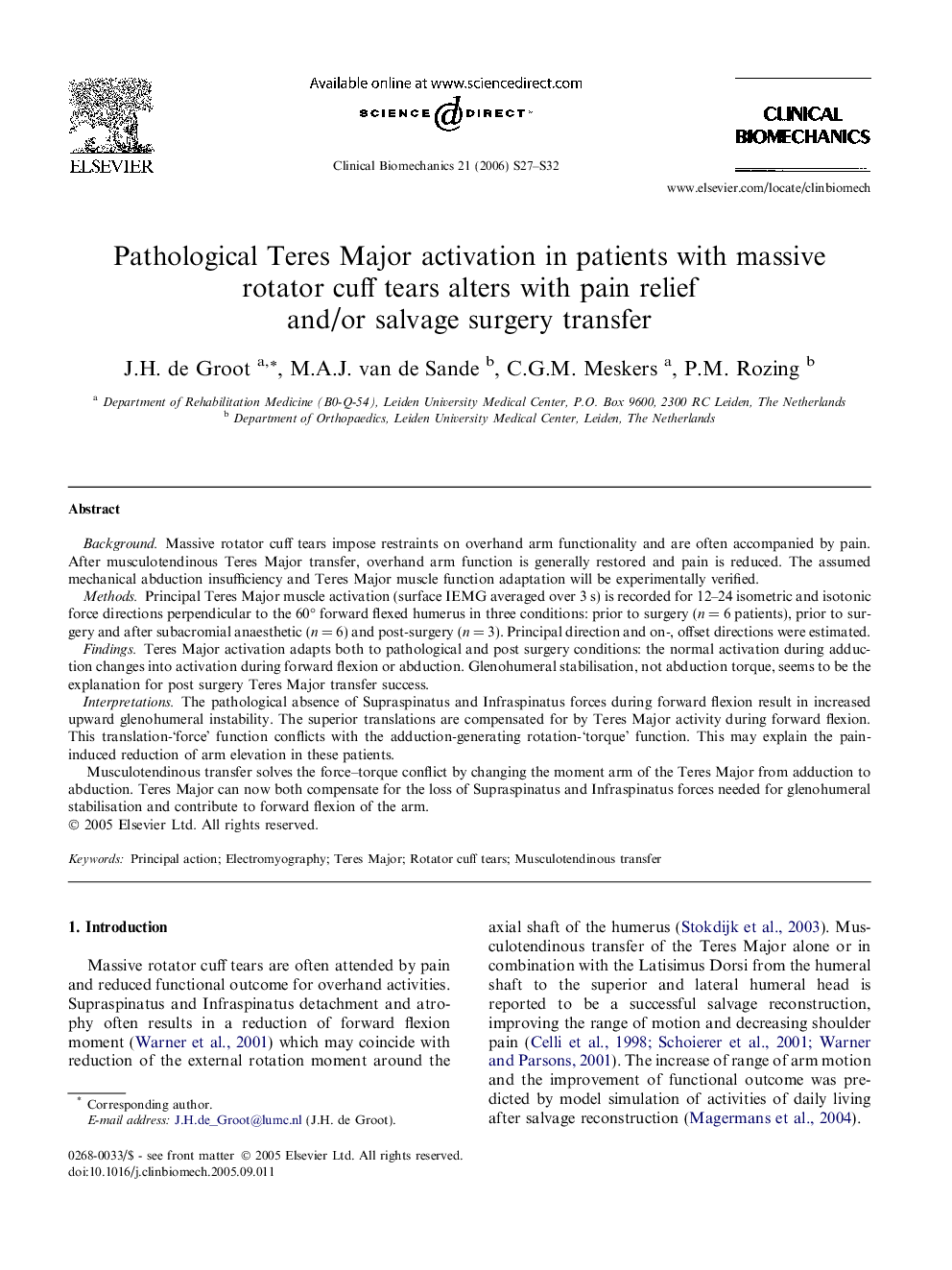| Article ID | Journal | Published Year | Pages | File Type |
|---|---|---|---|---|
| 4051618 | Clinical Biomechanics | 2006 | 6 Pages |
BackgroundMassive rotator cuff tears impose restraints on overhand arm functionality and are often accompanied by pain. After musculotendinous Teres Major transfer, overhand arm function is generally restored and pain is reduced. The assumed mechanical abduction insufficiency and Teres Major muscle function adaptation will be experimentally verified.MethodsPrincipal Teres Major muscle activation (surface IEMG averaged over 3 s) is recorded for 12–24 isometric and isotonic force directions perpendicular to the 60° forward flexed humerus in three conditions: prior to surgery (n = 6 patients), prior to surgery and after subacromial anaesthetic (n = 6) and post-surgery (n = 3). Principal direction and on-, offset directions were estimated.FindingsTeres Major activation adapts both to pathological and post surgery conditions: the normal activation during adduction changes into activation during forward flexion or abduction. Glenohumeral stabilisation, not abduction torque, seems to be the explanation for post surgery Teres Major transfer success.InterpretationsThe pathological absence of Supraspinatus and Infraspinatus forces during forward flexion result in increased upward glenohumeral instability. The superior translations are compensated for by Teres Major activity during forward flexion. This translation-‘force’ function conflicts with the adduction-generating rotation-‘torque’ function. This may explain the pain-induced reduction of arm elevation in these patients.Musculotendinous transfer solves the force–torque conflict by changing the moment arm of the Teres Major from adduction to abduction. Teres Major can now both compensate for the loss of Supraspinatus and Infraspinatus forces needed for glenohumeral stabilisation and contribute to forward flexion of the arm.
